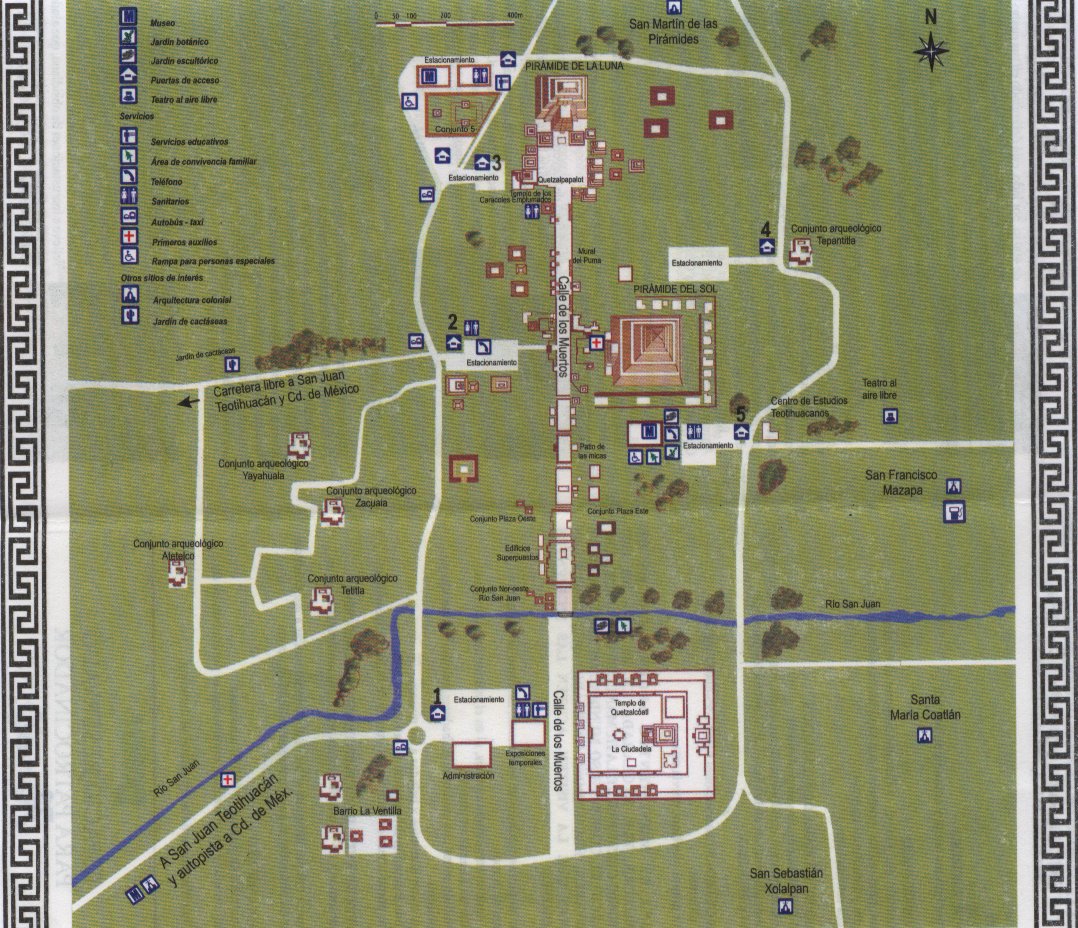
Teotihuacan Layout |
The Avenue of the Dead (Calle de los Muertos) runs vertically in the middle. La Ciduadela is at the bottom. The Pyramid of the Sun is in the middle,
to the right of the Avenue. Further on up the Avenue are the Pyramid of the Moon and the Plaza de la Luna.
Climbing the pyramids does not pose any problems for those used to climbing steep stairs. We spent the better part of an afternoon at the site in sight of these ancient pyramids. Getting there: Metro to Autobuses del Norte (Line 5) and then an hour's ride on the bus to Los Pyramides. One should be careful not to say "Teotihuacan" at the ticket window as that means the town of San Juan Teotihuacan which, though close enough to the historical site, is not within walking distance. One is well advised to say "Los Pyramides" which gets the message across. The bus drops visitors just outside the southern entrance (1). |
|
Panorama from the top of the Pyramid of the Sun (4:30 pm) |
Panorama from the top of the Pyramid of the Moon (5:30 pm) |